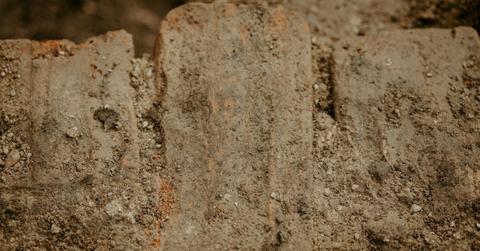Mine Marvel: 14,000-Year-Old Artifacts Considered Some of Earth's Oldest Prehistoric Treasures Uncovered in Wyoming

A dig at the Wyoming site is coming to an end, officials said.
Archaeologists are approaching the bottom of their current excavation at Sunrise, Wyoming, a former company mining town that has become a remarkable Paleoindian archaeological site.
Sunrise is notable for housing one of the largest red ochre mines in North America and some of the continent's oldest Paleoindian artifacts, some dating back 14,000 years, predating the Clovis culture, which thrived between 13,050 to 12,750 years ago, the Cowboy State Daily reported.
This challenges the long-held belief that Clovis man represents the oldest prehistoric human culture in North America.
The discovery of such ancient artifacts at Sunrise positions it among a select group of sites that could redefine the understanding of early human history in North America. This has drawn international attention, with researchers from Brazil and other countries joining the efforts at the site.
As the current dig nears completion, researchers are already planning future excavations.
George Zeimans, the Wyoming archaeologist leading the project, has identified potential new dig sites that could yield more artifacts. "We know there’s a main camp here somewhere," Zeimans said. "It’s just figuring out where it is."
However, ground-penetrating radar is ineffective at Sunrise due to the numerous iron deposits and artifacts scattered around, leading to false readings. "You would get too many false readings," Zeimens said. "It would take forever. So that just won’t work in this kind of situation."
Consequently, extensive digging will be required to locate the main camp. Despite the challenges, Zeimans remains enthusiastic. "If we knew all this stuff and had all the information we're after, then archaeology would be really boring," he said with a smile.
- A Man Was Found Dead in the Parking Lot of a Roller Rink a Town Over. But, How Did He Get There? And Who Killed Him?
- Armed Suspect Killed, Park Ranger Injured After Shootout in Yellowstone National Park
- Wyoming Hunter Paraded Wounded Wolf with Muzzle Taped Shut Around Bar Before Killing It: Authorities
The history of Sunrise adds complexity to the archaeological work. The site’s rich red ochre deposits attracted numerous Paleoindian groups, who dug into previous excavations, mixing artifacts from different periods.
"Everything is all mixed up because of that," Zeimans said. "It can’t be dated."
Current digs are focused further away from the ochre mining site to uncover undisturbed layers of time.
European settlers, in their quest for gold, silver, copper, and iron, further disrupted the site. The Colorado Fuel and Iron Company extracted approximately 40 million tons of iron ore from 1898 to 1980, significantly altering the landscape. Historical photographs reveal that the company smoothed and filled areas surrounding Sunrise with soil, potentially covering ancient campsites.
Zeimens acknowledges the possibility that the sought-after Paleoindian camp could lie beneath large stone structures like the YMCA building, dedicated in 1917. This scenario recalls European archaeological sites where Roman artifacts are found beneath modern facilities.
Never miss a story — sign up for the Front Page Detectives newsletter. Be on the scene the moment news breaks.
Zeimans, now focusing on ensuring the continuity of the archaeological work he started with the late George Frisson in 2015, observed recent excavations with satisfaction. Teams of archaeologists, flint knappers demonstrating ancient point crafting techniques, and groups experimenting with atlatls, an ancient spear-throwing tool, highlighted the site’s activity. Visitors toured the remnants of the old mining town and explored museum exhibits in preserved company houses, illustrating historical life.
Sunrise also serves as the field school for Eastern Wyoming College’s new archaeological program and recently hosted its first international symposium on early man.
"Every year this (archaeological site) has grown steadily," Zeimans said. "It’s gotten better and bigger and stronger. So, I’m pretty confident we’re on the right track. And when you put this whole package together, with the mining history, the archaeology, and all the historic stuff we’ve got here, there’s really nothing like this package anywhere else in North America."
Become a Front Page Detective
Sign up to receive breaking
Front Page Detectives
news and exclusive investigations.
